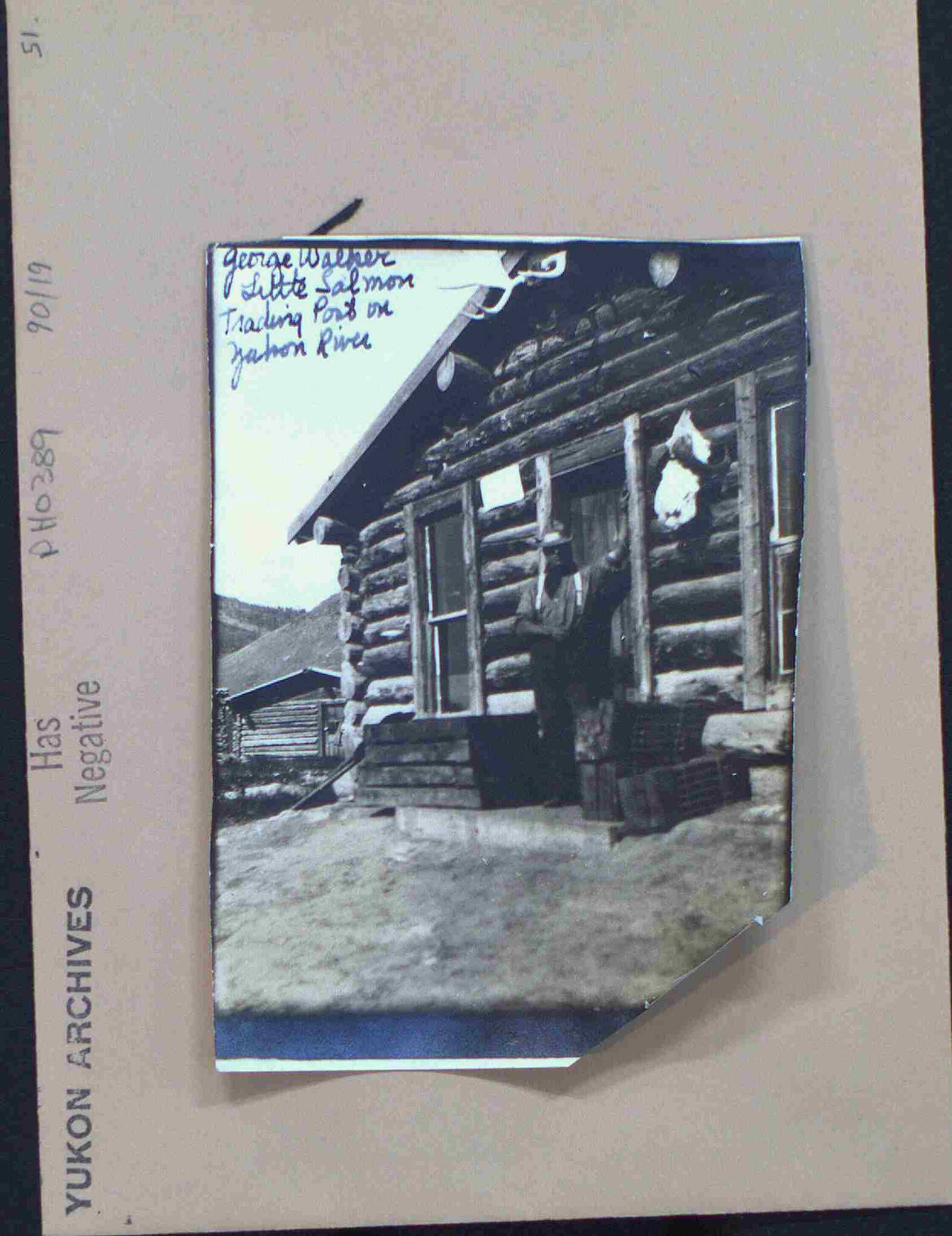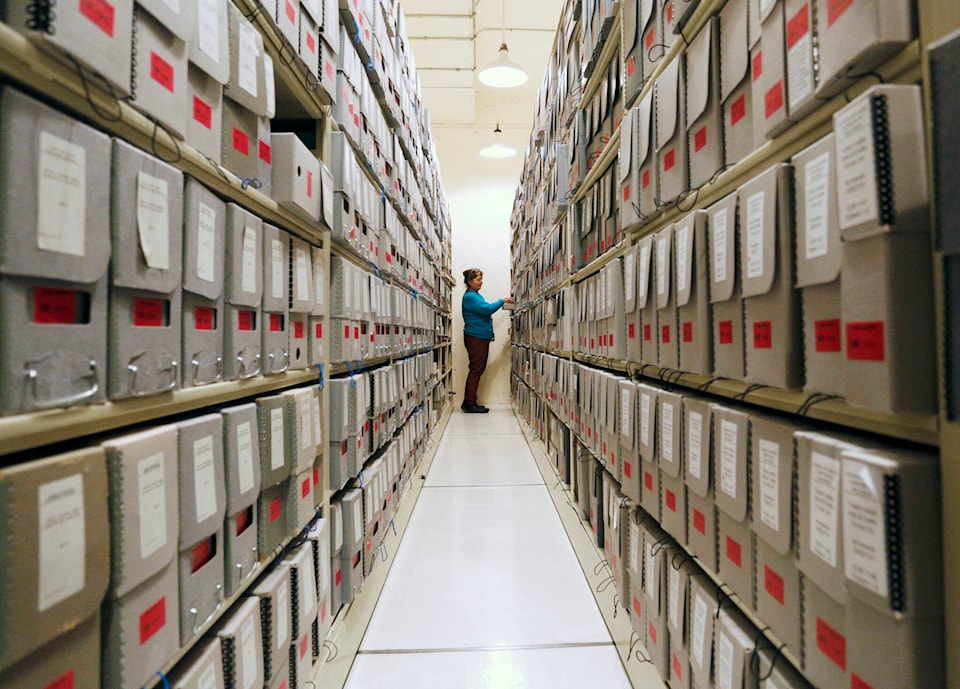The Yukon was a different place when I first came here 51 years ago. The population was smaller. The highways were unpaved and dusty, and they still had a chain of lodges to serve travelers on the way through. I remember buying camp food supplies at the Taylor and Drury Store on Front Street. Do any of you remember Klim brand powdered whole milk?
That was 1971. As a student of archaeology, I quickly noted that there was no resident archaeologist, or palaeontologist. There was no historic sites program, and the museums were all run on a volunteer basis. If you wanted to do any type of Yukon related research, you would have had to go to institutions in southern Canada or the US to find the material you were looking for. That isn’t the case anymore.
I returned in the summer of 1972 and became one of the first patrons of the newly established Yukon Archives. The ribbon cutting didn’t take place until December 10th of that year, but during the summer, it was already open for business, and I took advantage of that availability. I was fascinated to read century-old publications and examine the small but rapidly growing collection of photographs that they were assembling.
This year, we are celebrating the 50th birthday of the Yukon Archives with two special events. The first takes place starting today at Arts Underground. The second takes place next Saturday at the Yukon Archives, located on the traffic circle across from the Yukon Arts Centre on the campus of Yukon University.
The first event, at Arts Underground, located downstairs at the Hougen Centre, 305 Main Street, is an exhibit opening, sponsored by the Friends of the Yukon Archives Society, titled “Archival Gold: Favourites from the Vault.” The event commences at 5:00 PM. The exhibit which provides a brief history and a glimpse at items from its collection, will be on display at the Arts Underground until February 25. Do not wait till the last minute to see it.
The exhibit includes a timeline of important events in the 50-year history of the archives, and features material from the private collection of Reverend Donald Amos, the “Parka Padre,” who served along the Alaska Highway during its construction during the Second World War. The corporate records of the White Pass and Yukon Route are also profiled.
The Yukon Archives is a valuable resource for those doing genealogical research, and one exhibit panel is dedicated to that topic. The Yukon-related book collection is also featured in a panel, while another displays examples of personal diaries. These are just teasers to give the viewer a general idea of the fascinating scope of the collection.
I interviewed past and present archivists earlier this year about a special donation they had worked with at some time during their career at the Yukon Archives. Linda Johnson, a former territorial archivist picked the collection of Claude Tidd, a Mountie, and Mary, his wife, while Lesley Buchan introduced me to the Roy Minter papers. The former collection contains letters that the Tidds wrote to each other, while the latter includes historical photos and personal diaries. David Schlosser, the current territorial archivist, pointed me toward the remarkable photograph collection of Anton Vogee.

These are three examples from the extensive holdings of textual material contributed by thousands of donors seeking to find a safe and secure place where family papers or corporate records could be cared for.
During my 50-year relationship with the archives, I have made great use of the extensive photographic holdings. On one occasion, I was captivated by a collection of letters written by a man employed at a sawmill set up on the Carcross Road during the Alaska Highway construction, to his future wife, back in the United States. I have dived into century-old government records and scanned old newspapers dating back to the first editions published in the early days. Warning: when you search these newspapers, they are so loaded with interesting stories, you will find yourself constantly being distracted from your research to read them.
Much credit for the establishment of the Yukon Archives can be given to former commissioner James Smith, (1966-1976) who got the ball rolling. He turned to his former high school history teacher, Willard Ireland for help. Ireland was the provincial archivist of British Columbia from 1940 to 1974, which overlapped nicely with Smith’s time as Commissioner. Ireland provided guidance on the best practices at the time, establishing suitable legislation and lending the expertise of his staff to help design archival facilities and programs for the Yukon, with suitable professional support staff.
Brian Spears was the first territorial archivist, employed from 1972 to 1976. He focused on two key subject areas to get the ball rolling: the Klondike Gold Rush and the Alaska Highway, while overseeing the repatriation of Yukon government records that had been held at the national archives in Ottawa. He endeavoured to negotiate a non-partisan path in which all Yukoners would be included. He succeeded, and in the intervening decades, five other territorial archivists have followed in his footsteps. Thousands of donors from every community in the territory, across Canada and the United States have contributed to the holdings of the Yukon Archives.
Today, the collection is broad and diverse, including books and periodicals (more than 42,000 of them), 300,000 photographs, 18,000 maps, plans and atlases, 6,000 hours of film, audio and video recordings and six linear kilometres of textual material, including private collections and government records. The records of some First Nation governments and Indigenous organizations are held on deposit. In other words, it has become the documentary memory bank of the Yukon, and the go-to place to do Yukon-related research.
On December 10th, from 2:00 until 5:00 PM, the Yukon Archives will be holding a birthday celebration at the current facility on the Yukon University campus. Everybody is invited to attend. Included as guest speaker at the event will be Garth Graham, the former head of the library system when the Yukon Archives was established, who will share his recollection of the events leading up to the 1972 opening.
Along with refreshments and a birthday cake, there will be behind the scenes tours of the archive facility, including the storage and conservation facilities. I hope to see you there.
Michael Gates is Yukon’s first Story Laureate. His book, “Hollywood in the Klondike,” is now available in Whitehorse stores. You can contact him at msgates@northwestel.net
